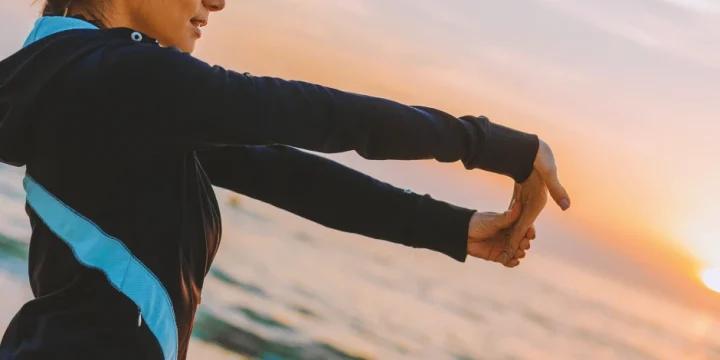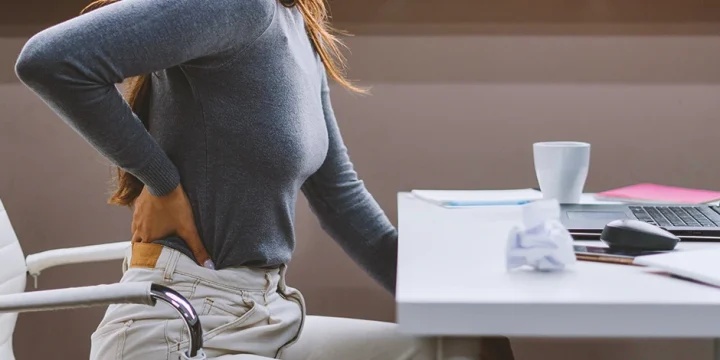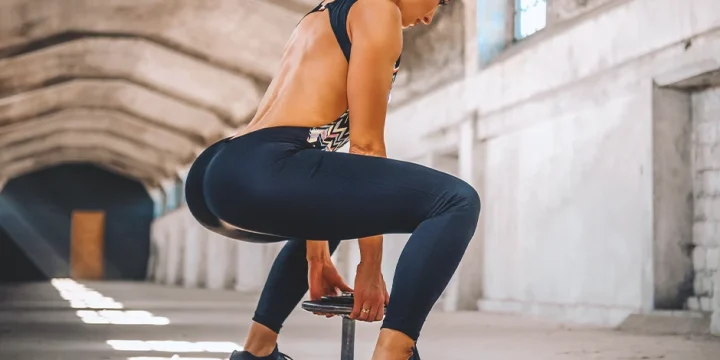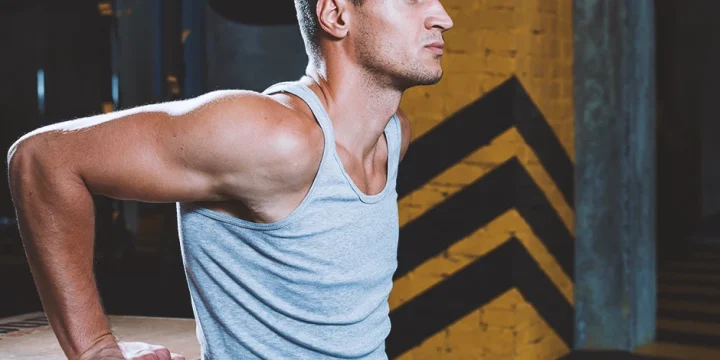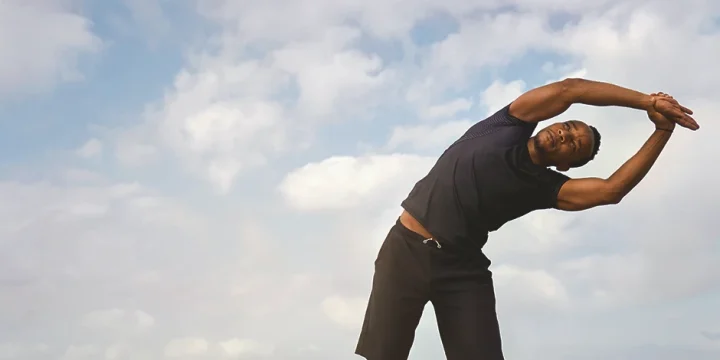Hip internal rotation is an often neglected yet crucial movement for maintaining proper posture and reducing strain on the body. It allows for an increased range of motion, enabling you to explore challenging poses and movements.
We did a ton of research and interviewed several fitness experts for their opinions on hip mobility exercises, and all our data suggests including hip internal rotation exercises is vital to avoid hip issues and reduced functionality.
This article will provide important information about hip internal rotation and the most effective stretches and exercises you can add to your regimen.
Quick Summary
- Enhancing hip internal rotation through specific exercises like side-lying, windshield wipers, and seated rotations is key to maintaining mobility and reducing bodily strain.
- These exercises primarily target muscles such as the tensor fascia latae, gluteus medius, and hip adductors, vital for daily activities like walking and running.
- A study from the Journal of Musculoskeletal and Neuronal Interactions highlights that poor hip rotation can increase stress on the lower back, risking pain and injury to joints, tendons, and ligaments.
- Incorporating hip internal rotation exercises into daily routines can greatly improve hip flexibility and reduce related discomfort, as experienced in my fitness journey.
Mobility Exercises for Hip Internal Rotation

Hip internal (medial) rotation refers to the movement where your thigh bone, known as the femur, rotates inward toward your pelvis at the hip joint.
The hip internal rotator muscles include the tensor fascia lata, gluteus medius, gluteus minimus, and hip adductor muscles, which are important for everyday activities, including walking, running, and even basic tasks like getting dressed [1].
Here are some hip internal rotation stretches to improve mobility and strength in your hip muscles.
Learn More: Hip External Rotation Exercises for Injury Prevention
1. Side-Lying Hip Rotation
In my training sessions, I've used the side-lying hip rotation exercise to target the gluteus medius effectively, ensuring minimal activation of the tensor fascia lata and anterior hip flexors.
Here's how to perform side-lying hip rotations:
- Begin by lying on your side.
- Flex your top hip forward, raising your thigh to 90 degrees or as desired for your goals.
- Hold your thigh in the air and internally rotate the hip by moving your foot toward the ceiling.
- Lower your foot towards the floor for external rotation of the hip.
- Repeat the movement for reps.
2. Seated Hip Internal Rotation
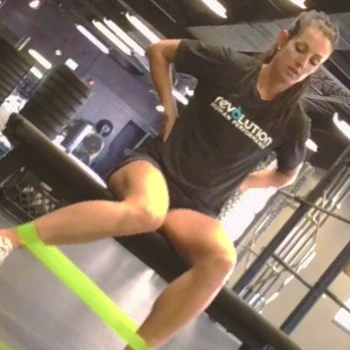
The heated hip internal rotation stretch is a mobility exercise where you rotate one leg inward while keeping the other on the floor.
Keep your buttocks grounded to isolate the movement in the hip joint.
Here are the steps to perform this stretch:
- Begin seated on the ground with your knees bent at a 90-degree angle.
- Position the soles of your feet flat on the floor, comfortably apart.
- Place your right hand behind your body, resting your right palm on the ground.
- Rest your left hand on your left knee.
- Flex your left foot, pointing your toes upward, to protect your knee during internal hip rotation.
- While keeping your hand on your left knee, rotate your left inner thigh towards the ground.
- Lower your left thigh until it forms a right angle with your calf, feeling a stretch in your hip's outer and frontal areas.
- Return your left leg to its original position.
3. Windshield Wipers
This is a yoga pose that provides relief for back pain while also improving core strength.
It targets the lower back and reinforces the internal rotators by engaging in an isometric contraction to counter lateral movement.
Here are the steps to perform a windshield wiper exercise:
- Lie on your back on the floor or bed.
- Bend your knees and keep your feet flat on the surface, about two feet apart.
- Extend your arms to the sides, forming a "T" shape for stability.
- For a gentler stretch, slowly lower both knees to the right side.
- Flex both feet to protect the knees, feeling an internal stretch in the left leg and an external rotation stretch in the right leg.
- Keep your shoulder blades on the floor or bed as much as possible.
- Hold the stretch for 30 seconds.
- Slowly bring your knees back to the center.
4. Posterior Capsule Stretch
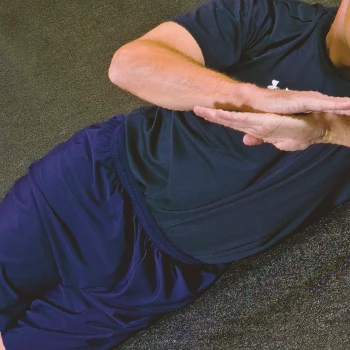
This dynamic stretch targets the mobility of the posterior joint capsule. Utilizing your body weight and thigh bone in the exercise enhances hip flexion, allowing a better range of motion when bringing the hip toward the chest.
To perform the posterior capsule stretch:
- Start on your hands and knees, activating your core.
- Gradually move your buttocks halfway back towards your heels, ensuring there is no discomfort in the front of your hip.
- Shift your weight to either your right or left knee.
- Experience a stretch along the outer hip and buttocks on the side you shifted towards.
- Maintain the stretch for 10 seconds.
5. 90-90 Leg Lift
This exercise is beneficial for any warm-up leg routine.
It dynamically mimics internal hip rotation, activating hip rotators and promoting a full range of motion for internal and external rotation.
Follow these steps to do this exercise:
- Begin seated on the ground with your knees bent, positioned wider than shoulder-width apart.
- Rotate one leg inward (internal rotation) and the other outward (external rotation).
- Ensure your thighs form a 90-degree angle with each other.
- Lift the foot of the internally rotated leg off the ground, holding the position for 5 seconds.
- Lower the leg back to the ground.
6. Clamshells With Resistance Band
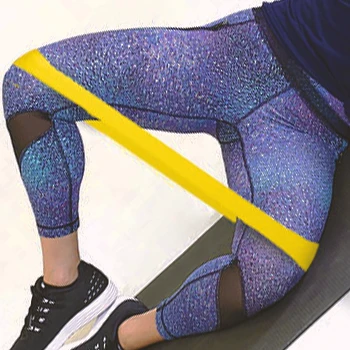
Resistance band clamshells strengthen the gluteus medius, improving hip stability and internal rotation.
This exercise targets hip abduction, engaging the critical muscle responsible for these movements.
The steps to perform clamshells with a resistance band are as follows:
- Start by lying on your right side with your feet, legs, and hips aligned and your knees bent at a 45-degree angle.
- Support your head on your right arm or prop it up with your hand while engaging your core for stability.
- Place a resistance band around your thighs, just above your knees.
- Keep your feet in contact with each other and lift your upper leg comfortably without shifting your hips.
- Maintain a brief pause at the top, then lower your leg back to the starting position.
- Aim for 30 repetitions on the right side, then switch sides to perform the exercise on the left leg.
7. Squatting Internal Rotations
This excellent lower-body strength exercise enhances hip flexion and mobility, promoting increased medial rotation of the hip muscles.
To perform squatting rotations:
- Begin in a deep squat position, ensuring you feel balanced and centered.
- Lift one heel off the floor, allowing you to pivot on the ball of the foot and rotate the entire leg inward from the hip joint.
- Aim for freedom in the hip, knee, and ankle, allowing the leg to rotate smoothly without any limitations.
- Switch legs, continuing the rotational movement while maintaining a fluid and unrestricted rotation.
Most of the exercises listed above can be seamlessly incorporated into your daily routine. Simple stretches can be done while watching TV or during work breaks, making it easier to improve hip mobility without dedicating extra time to workouts.
What Causes Reduced Rotation?

In my experience as a health coach, I've seen that factors like strained muscles, sedentary lifestyle, and poor posture often contribute to reduced hip internal rotation.
Let’s dissect them in a bit more detail:
- Strained muscles: Overworking hip internal rotators can lead to muscular stiffness, but training them once a week is sufficient.
- Sedentary lifestyle: Inactivity and prolonged sitting can overload the hips, resulting in stiffness and loss of mobility, according to the International Journal of Environmental Research and Public Health study [2].
- Repetitive and Intensive Movements: The Journal of Children's Orthopaedics suggests that activities like soccer may lead to the shortening of muscles involved in foot support and rotation, such as hamstrings and quadriceps, potentially restricting external rotation range [3].
- Poor posture: Hunched backs and rounded shoulders from an inactive lifestyle can contribute to poor hip mobility.
- Hip impingement: Femoral head pinches against the hip joint cup, causing stiffness and pain and potentially leading to arthritis.
- Osteoarthritis: Common joint disorder where protective cartilage wears down, affecting hands, knees, hips, and spine joints.
- Trochanteric bursitis: Inflammation of the fluid-filled sac near the hip joint's greater trochanter, causing chronic upper leg and hip pain.
"When you sit too much and don't move around, the muscles in your hips, legs, and calves get tighter."
- Dr. Lauren Elson, M.D.
The Potential Side Effects of Weak Internal Hip Rotation

Through my extensive experience in fitness, I've observed that weak hip internal rotators can lead to more than just pain; they affect overall mobility and stability:
- Gait issues: Compromised internal hip rotation can impact walking, running, jumping, and balance, leading to dizziness, lightheadedness, vertigo, motion sickness, and double vision, as stated in the 2009 study from the American Journal of Sports Medicine [4].
- Weak lower body: Frail hips can hinder lower body development, eventually affecting overall strength and stability.
- Compromised range of motion: Muscle stiffness and weakness can limit the range of motion, impacting functionality, causing pain, and reducing physical performance.
- Lower back pain: Weak glutes and poor hip rotation put extra stress on the lower back, increasing the risk of lower back pain and potential injury to surrounding joints, tendons, and ligaments, as per a Journal of Musculoskeletal and Neuronal Interactions study [5].
“The very interesting thing that we often find is that low back pain is intimately related with hip dysfunction. This occurs when the back is making up for the loss of the hip’s full capabilities."
- Dr. Chad Adams, DC, Chiropractor
FAQs
What Is a Hip Internal Rotation Deficiency?
Tight tissues, anatomical differences, and inadequate load management during sports or physical activities cause hip internal rotation deficiency. These factors contribute to limitations in hip mobility and range of motion when rotating the thigh bone inwardly.
How Do You Fix Poor Internal Rotation?
You can fix poor internal rotation by performing hip strengthening exercises and stretches focusing on internal rotation.
References:
- https://www.ncbi.nlm.nih.gov/books/NBK526019/
- https://www.ncbi.nlm.nih.gov/pmc/articles/PMC7922112/
- https://www.ncbi.nlm.nih.gov/pmc/articles/PMC9254021/
- https://pubmed.ncbi.nlm.nih.gov/19098153/
- https://www.ncbi.nlm.nih.gov/pmc/articles/PMC6454257/
About The Author
You May Also Like
